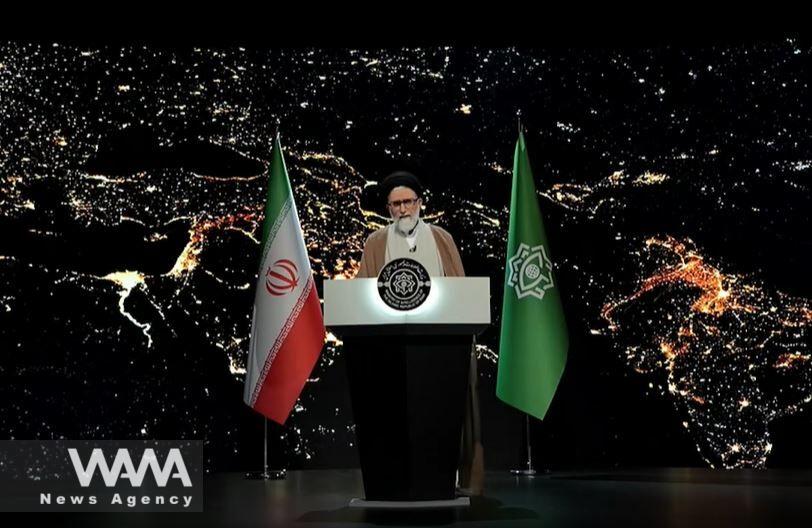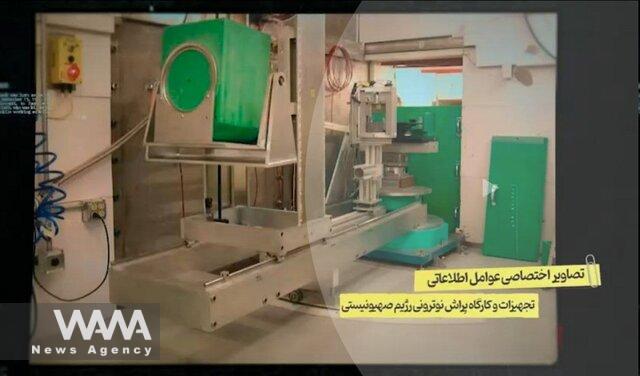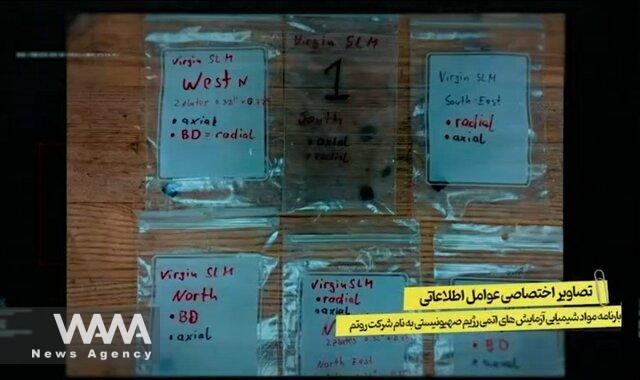WANA (Sep 24) – On September 24, 2025, Iranian state television aired a documentary titled “Spider’s Den”, showcasing what officials in Tehran called an unprecedented intelligence breach into the “hidden chambers of the Zionist regime.” According to Iran’s Intelligence Ministry, the operation extracted “millions of pages” of classified documents from Israel’s nuclear, military, and intelligence centers, along with detailed lists of individuals involved in Tel Aviv’s weapons projects.
At the center of the narrative was Esmaeil Khatib, Iran’s Minister of Intelligence, who—with a deliberate smirk—directly addressed Benjamin Netanyahu: “Instead of worrying about Iran’s water problem, try to solve the bread problem of your own employees. Many of them collaborated with us for money, and they still do.”
The Operation and Its “Treasure Trove”
The Intelligence Ministry described the breach as “one of the most complex multi-layered intelligence operations ever conducted,” resulting in a collection that exposes both human and technical networks tied to Israel’s weapons programs. It allegedly includes “the names of 189 nuclear and military specialists,” as well as addresses of related facilities and companies.
Khatib repeatedly emphasized that what was revealed in the documentary was only a small, preliminary portion of the “millions of pages” acquired. The real work, he said, is now in the data-processing stage—mapping the human and organizational networks behind the documents.
Exclusive images by Iranian intelligence operatives of the Zionist regime’s neutron diffraction equipment and workshops. Social media / WANA News Agency
He referred to the cache as a “treasure trove,” claiming it contains:
details of past and ongoing weapons projects,
Programs for upgrading and reprocessing old nuclear arms,joint projects with the U.S. and certain European states,
the full bureaucratic structure and personnel of Israel’s nuclear establishment,
and even the names of American and European researchers involved.
According to Khatib, during the 12-day war, part of this intelligence was already put to use. “The trove included precise data on sensitive military and dual-use scientific sites. Once the coordinates were handed to our missile units, some were successfully targeted,” he said—citing the attack on Israel’s Weizmann Institute, which Israeli media reported had caused an estimated $600 million in damages.
45 laboratories at the Weizmann Institute were destroyed in Iranian missile attacks, social media / WANA News Agency
Motivations and the Network Structure
One striking element of Tehran’s narrative was its emphasis on why Israelis allegedly collaborated. Khatib listed two main motives: money, and deep hatred for “the corrupt and criminal prime minister.” Linking this to Netanyahu’s political troubles, he claimed that economic grievances among Israeli employees had become exploitable cracks in the system.
Tehran said the information was gathered through a “cellular” structure—separate, compartmentalized networks whose members were unaware of each other. Guided by Iranian handlers, the information was funneled to central analysis units. This design, officials claimed, ensured that even if some operatives were exposed, the wider network would remain intact.
International Dimensions and Diplomatic Fallout
The revelations also pointed to alleged clandestine cooperation between Israel and international actors. Among the documents, Iran claimed, were records showing “U.S. and certain European assistance” to Israel’s weapons programs, along with political and intelligence influence over global institutions such as the International Atomic Energy Agency (IAEA). In one particularly sensational claim, the documentary suggested that personal information about the IAEA’s director-general was also among the files.
Private photos of Rafael Grossi (Director General of the International Atomic Energy Agency) found among the Israeli spy files. Social media / WANA News Agency
Analysts warn such allegations could heighten diplomatic friction in two ways: first, the disclosure of individual identities and structures may trigger international legal and security reactions; second, the implicit accusations against third-party states may fuel geopolitical rivalry and mutual recriminations. Tehran, however, framed the operation as not merely an intelligence feat but “a moral response” to what it called the “Zionist-American current.”
Images, Names, and the Claimed Reality
The program showed images and documents said to have been smuggled from Israel’s Negev facilities and other high-security sites. Lists of names were broadcast—including “Alkrovin,” “Eilat Caspi,” “Eyal Yahel,” and others allegedly involved in weapons research and production. Footage described the transfer of these files out of ultra-secure zones and their eventual delivery to Tehran.
Tehran’s Message and the Next Stage
Khatib closed with a warning: Iran holds more spy files, and the current disclosure is “only the beginning.” He promised further releases as part of a phased strategy—simultaneously reinforcing domestic pride and serving as leverage in regional power struggles.
In the short term, Iran’s message is twofold: a display of operational prowess by its intelligence services, and a humiliation of Israel by highlighting monetary motives and discontent among Israeli personnel.
Shipping documents for chemical materials used in the Zionist regime’s nuclear experiments, registered under the company name Ronma. Social media / WANA News Agency
Strategically, the disclosure is more than an intelligence operation; it is a direct strike at the credibility of Mossad and Israel’s security establishment. For decades, Israel built deterrence by projecting an image of invulnerability. That image, Tehran now claims, is fractured. As one analyst put it: “This operation showed that Iran’s intelligence services are not only defensive but offensive—they can penetrate the most guarded centers of Israel’s security state.”
By portraying not only officials but also ordinary Israelis as willing to work with Tehran, the operation adds a social dimension—suggesting that economic hardship and internal dissatisfaction are the weak links threatening Israel’s security.
So far, the Zionist regime’s security apparatus has not yet succeeded in uncovering the full network or the other active cells involved in this operation.
As Khatib quipped: “The Western club of domination made a fatal miscalculation when it unleashed its rabid dog (Israel).” This time, the only result was the exposure of Israel’s structural weaknesses.





